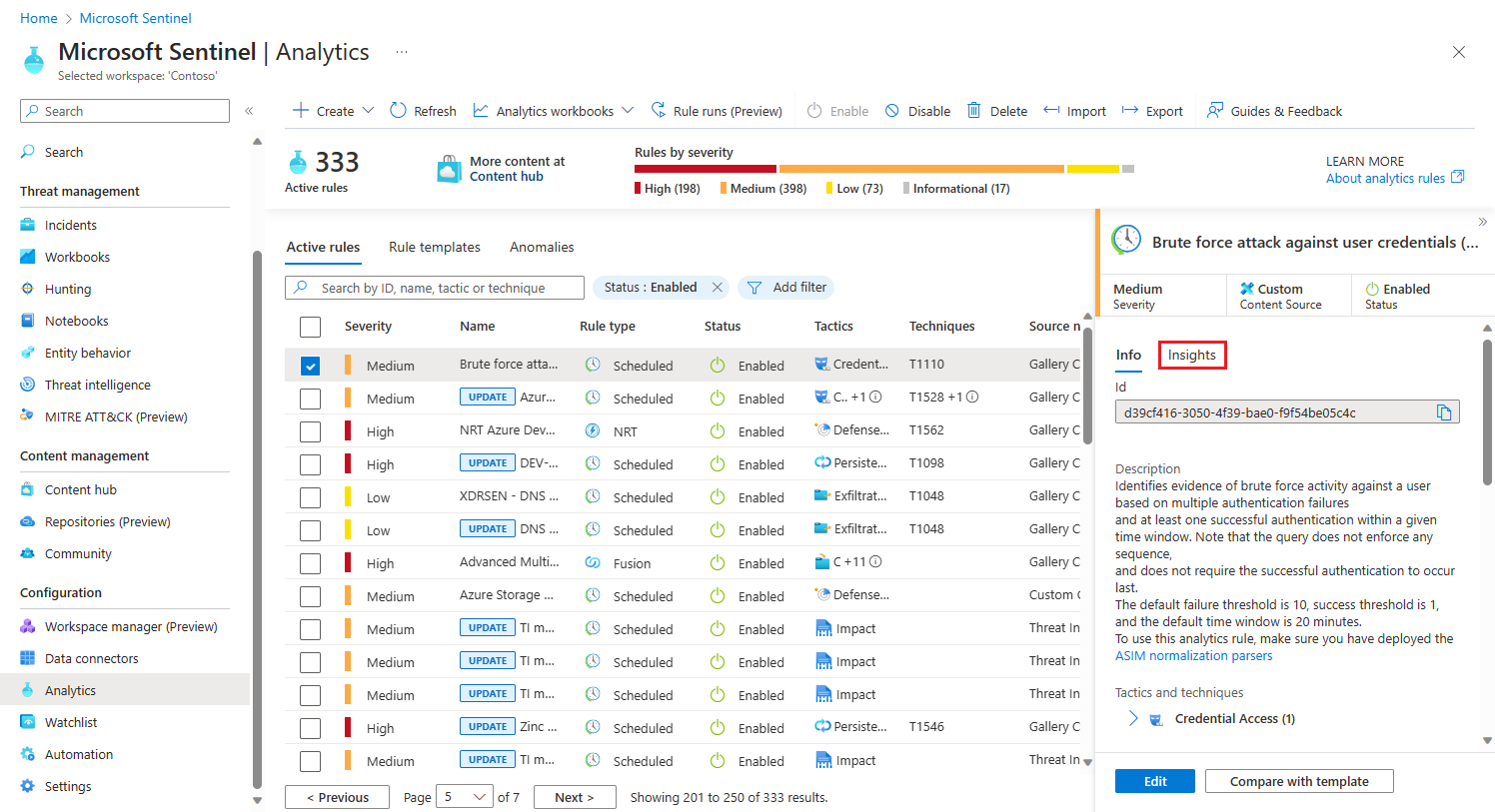What is Microsoft Sentinel Analytics?
Microsoft Sentinel Analytics helps you detect, investigate, and remediate cybersecurity threats. The Contoso SOC team can use Microsoft Sentinel Analytics to set up analytics rules and queries to detect issues in your environment.
What is Microsoft Sentinel Analytics?
Microsoft Sentinel Analytics provides several functionalities that you can use to implement security for the data and resources at Contoso.
You can analyze historical data collected from your workstations, servers, networking devices, firewalls, intrusion prevention, sensors, and so on. Microsoft Sentinel Analytics analyzes data from various sources to identify correlations and anomalies.
By using analytics rules, you can trigger alerts based on the attack techniques that are used by known malicious actors. You can set up these rules to help ensure your SOC is alerted to potential security incidents in your environment in a timely fashion.
Why use analytics rules for security operations?
Although some of the other products that Contoso implemented can help you identify threats, Microsoft Sentinel Analytics plays an important part in the overall detection of the security threat by correlating and matching the signals that impact the presence of a cybersecurity threat. With the proper analytics rule, you can get insights into where an attack originated from, what resources were compromised, potential data lost, along with the timeline for the incident.
Common security analytics use cases include:
Identification of compromised accounts
User behavior analysis to detect potentially suspicious patterns
Network traffic analysis to locate trends indicating potential attacks
Detection of data exfiltration by attackers
Detection of insider threats
Investigation of incidents
Threat hunting
You might not be able to detect some of the threats by using conventional protection tools, such as firewalls or antimalware solutions. Certain threats can go undetected for months. Combining data, gathered by multiple tools and products, with the power of threat intelligence can help you to detect, analyze, and mitigate insider threats.
You can also use analytics rules to create custom alerts that use indicators of attack. These indicators can identify potential attacks that are in progress in real time.
Analytics helps the Contoso SOC team to improve the efficiency of their complex investigation and detect threats faster.
Exploring the Analytics home page
You can create analytics rules from the Analytics home page. You can access the Analytics page in Microsoft Sentinel from the navigation pane.

The Analytics home page has three main parts:
The header bar contains information on the number of the rules that are currently in use.
The list of rules and templates contains all the rule templates that Microsoft has preloaded from the Microsoft Sentinel GitHub repository.
The details pane contains additional information that explains each template and rule that you can use in detection.
Filter the rule templates
Currently Microsoft has preloaded over 150 template rules from the Microsoft Sentinel GitHub repository. To search these templates and to access the appropriate rule, you need to apply filters. For example, you might want to review only template rules that detect threats with a high severity level or rules from specific data sources.
To use filters, in the header bar, select the filters you want to use.

The Analytics home page provides the following filters:
Severity. Use to filter the rules by levels of severity.
Rule Type. There are currently four types of rules: Scheduled, Fusion, Microsoft Security, Machine Learning Behavior Analytics.
Tactics. Use to filter the rules based on 14 specific methodologies in ATT&CK model.
Data Sources. Use to filter the rules by the data source connector that generates the alert.
Note
MITRE ATT&CK is a globally accessible knowledge base of adversary tactics and techniques based on real-world observations. The ATT&CK knowledge base is used as a foundation for the development of specific threat models and methodologies in the private sector, in government, and in the cybersecurity product and service community.